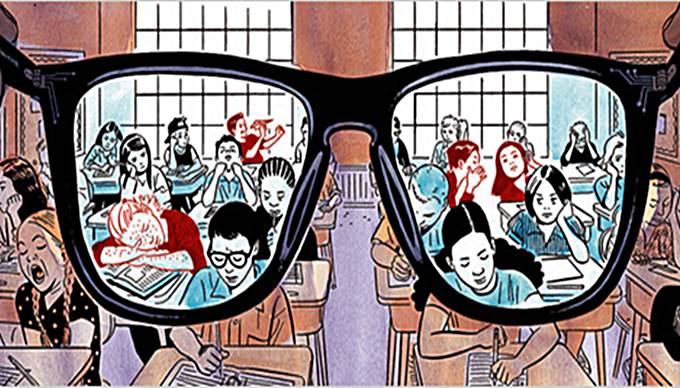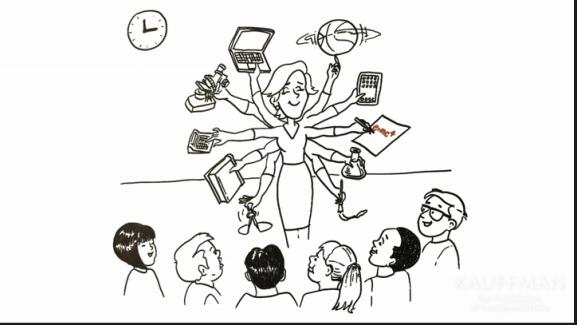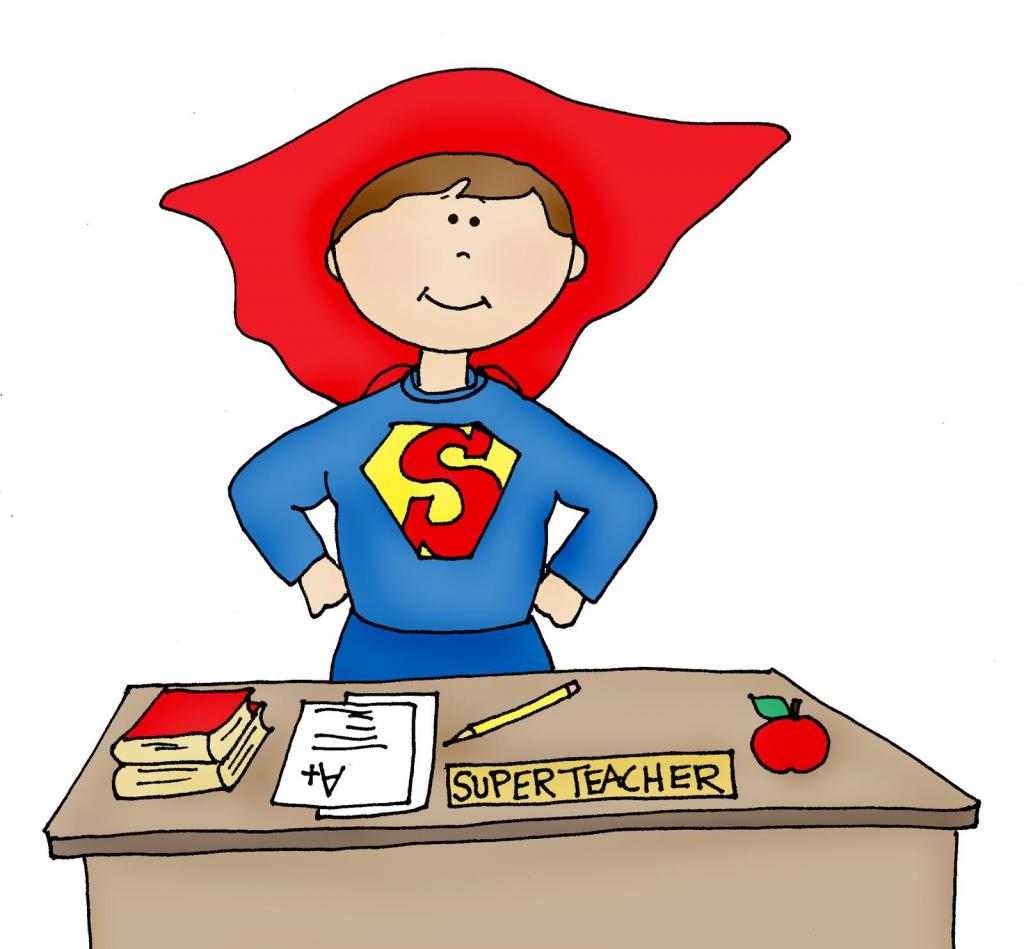This article is devoted to the styles of pedagogical communication. It will reveal the essence of the interaction between teachers and schoolchildren, as well as its main types.
There is a lot of methodological literature on this subject, however, some of the information published in the manuals is outdated. The reason for this is the new state educational standard, as well as the latest version of the Law on Education, which approved some provisions that were not previously considered.
Relevance of the problem
Styles of pedagogical communication is one of the most important topics of modern literature on education. It is this interaction of the student with the teacher that is the realization in practice of all the knowledge that is given in the teaching aids. Exactly how the training is carried out, in what atmosphere it takes place, to a large extent determines the success of the whole process.
The following definition can be given to pedagogical communication: it is a system of methods, principles and actions aimed at achieving educational goals and objectives. It is safe to say that there are no two identical teachers who have completely identical manners of interacting with students, just as there can be no people with matching characters.
However, there are some common features that many teachers find. Based on them, the classifications that exist at present are created. Therefore, the concept of the style of pedagogical communication can be formulated as follows: this is an individual set of principles, methods, actions, techniques that the teacher uses.
Different points of view
Styles of pedagogical communication is a topic that has been developed by scientists for decades. The first to speak on this issue were Western experts, while in the Soviet Union it was practically not considered. In our country for a long time, the only way the teacher and student interacted was through the principle of subject-object relations. That is, the teacher was perceived as a boss, a leader whose authority is not questioned, and whose words should be executed without discussion.
The first to speak about the styles of pedagogical communication with children was the foreign scientist K. Edwards. He built his classification on the personal characteristics of teachers. Below are briefly described the styles of pedagogical communication according to Edwards.
- Communication is self-sacrifice. There are a certain number of teachers who build relationships with their students, trying to understand the personality characteristics, individual characteristics, desires of each of them. He also seeks to solve the problems that arise in children in the learning process. In his work, such a mentor tries to make the education process as comfortable as possible for each child. As you can see, the individual style of pedagogical communication is based primarily on the study of the psychological component of interpersonal interaction.

- Academic style. The teacher, adhering to this method of building relations between him and his students, is guided in his work primarily by those provisions, recommendations and rules that are given in the pedagogical and methodological literature. He almost never deviates from these norms and, as a rule, has a negative attitude towards colleagues who have a different point of view on this issue. Usually, only beginners of their professional path behave in a similar way. Their life and teaching experience does not allow us to realize that the rules that seem to be ideal are not always applicable. In addition, they are still impressed by the pedagogical practice in higher or secondary vocational schools, when any deviation from the lesson compiled in advance is often perceived by the methodologists as a mistake. More experienced teachers, as a rule, do not use such a style, because in the process of their activity they often develop their own techniques.
- Creativity. This style of professional and pedagogical communication involves knowledge of specialized literature. However, a teacher who adheres to this manner of communicating with students does not focus on the unquestioning performance of all canons, but prefers to act according to the situation. Moreover, he relies mainly on his own conclusions made on the basis of logical thinking.

This style of pedagogical communication is the most perfect of the presented classification of Edwards. Such a conclusion can be made on the basis of the following provisions: firstly, a teacher who builds interaction with students on the basis of logical conclusions and, at the same time, draws on the experience of his predecessors, constantly improves his work, since the experience that he accumulates over time contributes to this . Secondly, such communication with the wards does not exclude the establishment of warm, friendly relations, where the interests of both parties will be taken into account, as is the case with teachers who adhere to the first style.
However, the formation of such an approach to their professional activities requires considerable experience and knowledge in the field of pedagogy. Therefore, it can be argued that this style is a rarity among young representatives of the teaching profession.
It all depends on the mood
In domestic pedagogical thought, many scholars dealt with this issue, among which the works of Berezovin, V. A. Kan-Kalik, Ya. L. Kolominsky, and others are especially distinguished.
According to one of the points of view, it is necessary to determine the style of pedagogical communication of this or that teacher depending on his attitude to his students. Here we are talking about the degree of friendliness of the teacher and his desire to resolve all conflicts peacefully.
According to this principle, all styles of interaction between students and mentors can be divided into the following varieties:
- Steady positive style. A teacher who is friendly, friendly in communicating with students, seeks to resolve any conflict without infringing on the rights of the child, without offending his feelings. This does not mean that such a teacher never makes comments and does not give unsatisfactory ratings. But all his actions are predictable and the students do not feel offended, because working with such a teacher, they get used to the idea that any misconduct or prank can cause a negative reaction from their mentor. It is worth noting that only one who consciously came to work in school can become such a teacher. Such a person when choosing a profession was guided primarily not by the financial side of the issue, but by a natural tendency to this activity. Undoubtedly, he should possess the following qualities: love for children, the ability to empathize, to be fair, to have the necessary professional knowledge and skills in the field of his subject and so on.

- Unpredictable style. A teacher who adheres to such tactics can be described with the words "monkey with a grenade." His demands and attitudes towards students are completely subordinate to his momentary mood. Such teachers, as a rule, have favorites from among schoolchildren, whom they overstate, the reason for this may be a banal sympathy for the personality of the student.
Usually, schoolchildren negatively perceive a teacher's similar communication style. Teaching activities of this kind lead to the fact that children are extremely uncomfortable in the classroom, experience a sense of insecurity and uncertainty in the future. You can give an example illustrating such communication with students. The teacher does not give the students homework and says that in the next lesson there will be a repetition of the topics covered. Instead, he, suddenly discovering that it is necessary to carry out an audit according to the plan, does this. What kind of reaction can students have in this situation? Of course, apart from negative emotions, such a teacher’s behavior cannot cause anything. As a rule, such communication with students is the result of an irresponsible attitude towards their activities, and also speaks of gaps in their own upbringing and in pedagogical knowledge.
There are also examples of negative pedagogical style. Say a negative attitude towards students. Sometimes there are indeed teachers who do not like their profession, are not satisfied with the place of work, and are not shy about taking their personal failures out of their children. For example, in the 90s, many school teachers openly stated that they were late for classes, communicate with students unfriendly, unfriendly due to the fact that they were being delayed. Of course, teachers who find themselves in a difficult life situation can cause sympathy and understanding, but such an attitude towards schoolchildren from them is unacceptable regardless of circumstances.
Fatal mistake
The second type of negative communication between teachers and students is the so-called familiarization. In other words, the teacher flirts with his wards, using all possible methods in order to gain popularity. An example of this behavior can be a character from the famous Soviet film "Republic of SKID". This hero, as a teacher of literature, completely disengaged from professional duties, devoting lessons to singing comic songs. According to the plot of the film, such an attitude to his activities caused a well-deserved anger of the leadership. As a result, a negligent teacher was expelled from school with shame.
The popularity acquired by educators in this way is visible and over time will easily turn into contempt on the part of students, as well as a frivolous attitude to both the subject and the teacher. Most often, such mistakes are made by young teachers, trying to raise their credibility among the wards. Therefore, teachers in the subject of pedagogy often warn their students about the dangers of making such mistakes.
In this classification, the style presented under the first number, namely stable positive, is the most preferable in building relations between teacher and students.
The main weapon of the teacher
There is another classification of the styles of pedagogical communication and its characteristics, which is based on the personal qualities used by the teacher in order to earn authority among schoolchildren. According to this criterion, the following types of interaction between students and teachers are distinguished:
- A teacher passionate about his subject. Probably every parent dreams that a person who not only knows this science perfectly, but who can emotionally and interestingly talk about how to solve a particular problem, while giving non-standard ways to find solutions, teaches his child mathematics. Having before our eyes an example of such a passion for work, students will undoubtedly receive a useful lesson and understand how to relate to their work. In addition, in pedagogy there is such a thing as infection. Under this word in this science is meant the transfer of interest from one person to another through positive emotions. So, many prominent scientists admit that they became interested in a certain branch of knowledge thanks to their school teachers who were true fans of their field.

- A teacher who was able to achieve recognition on the part of students with their personal qualities, authority. This option, with all its external positivity, is much less preferable than the first. From an early age, schoolchildren must learn to appreciate in a person not only external manifestations of character, but also internal content, which can be expressed in the teacher’s dedication to his work.
Traditional approach
In this article, many words have already been said about the styles of pedagogical activity and styles of pedagogical communication, but it is worth mentioning the most common classification. According to this system, teaching interaction with students can be divided into the following types:
- An authoritarian style of pedagogical communication. In this way of interacting with children, the teacher usually does not support any feedback with them in the sense of taking into account their wishes, opportunities and so on. Training is conducted from the position of "Teacher - head, schoolboy - subordinate." Many modern teaching aids reject the possibility of such a style in a modern secondary school. However, this point of view is not always true. The authoritarian style is quite appropriate in elementary school, when children have not yet fully developed the emotional-volitional sphere, teaching skills, as well as motivation to acquire knowledge, are not fully formulated. In such a situation, the teacher has no other choice but to take control of the entire learning process. The same can be said about the pedagogical style of communication of the teacher in the preschool. This does not mean that the teacher must put numerous negative marks, often scold his wards, and so on. An authoritarian style presupposes only a not so high percentage of schoolchildren independence, as at the senior levels of education. As for the methods and principles of training, with this style, reproductive types of information transfer are usually used. That is, students are given ready-made material that needs to be learned. Deviation from the intended rules is usually not welcome.

- Democratic style. It is with such communication that the so-called subject-subject relations are realized. That is, the pedagogical process takes place in constant interaction. The teacher reacts to the personal characteristics of each student, tries to take into account the wishes, acts depending on the situation in the lesson. Instead of the suggestions traditional for an authoritarian style, influence methods such as persuasion, infection with emotions, and so on are more often used here. It is with a democratic form of communication that it is easiest to carry out the so-called problem-based learning, that is, a kind of transfer of knowledge in which the material is given to students not ready-made.
Features of the democratic style
Children need to set the goals and objectives of their activities, find the necessary literature, make a reflection and take into account all the mistakes. At the end of the process, students need to give themselves an assessment, that is, correlate goals and objectives with the results. Such an education requires from children sufficiently formed training skills, as well as a high level of discipline. Therefore, in elementary school only some elements of it are possible.
Considering the main styles of pedagogical communication, it is worth saying that their democratic variety can be fully used only at the middle stage of the comprehensive school program.
The transition from an authoritarian to a democratic style should not be carried out abruptly. It should occur gradually and smoothly. With this implementation of the change in the attitude of teachers towards children, the latter cannot have a feeling of discomfort and insecurity in the future. On the contrary, this change will be almost imperceptible, proceeding in accordance with the age characteristics of students. Much less often, one can observe the liberal style of pedagogical communication. This form of teacher-student interaction can be called the simple word "connivance."
Liberal style characteristics
The teacher provides students with the opportunity to choose their educational path, but at the same time does not support them in the learning process. As a rule, this happens when the teacher reassesses the children’s abilities, as well as when he elementarily neglects his duties.
However, elements of a liberal style are possible in some types of learning activities. For example, in the implementation of school self-government, during the work of the headman, and so on. As a rule, at such events, children are given the freedom to resolve certain issues without the participation of mentors.
Mixed type
The traditional classification of the styles of pedagogical communication is based on the styles of pedagogical leadership and has common terms with political science: liberal, democratic, and so on.
A person with only one type of temperament can be met extremely rarely. teachers with a clean communication style, that is, referring to only one of the groups, are also an infrequent phenomenon. Usually, teachers build their interactions with students by applying various elements of several styles. However, one of these varieties tends to prevail.
. ( ) , . . . , , . .
Conclusion
This article addresses the issue of styles of pedagogical communication. Its structure and functions can be described as follows. Pedagogical communication is a type of activity aimed at transferring knowledge and inculcating certain personal qualities (education). It consists of two components: internal communication - this is the teacher’s work in preparation for classes, reflection and work on their own mistakes, and external - this is just the style of pedagogical communication. Communication teacher with children is determined by its variety.